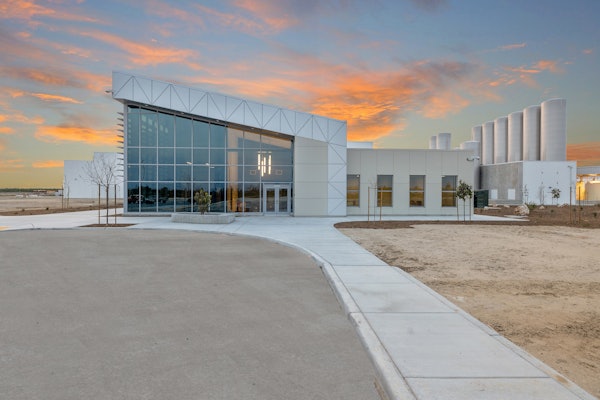Quick hits:
- Tyson Foods opens $425 million chicken processing plant, feed mill, and hatchery
- General Mills aims to attain net zero greenhouse gas emissions by 2050
- Swift Prepared Foods to build meat and charcuterie facility in Missouri
- 11.3% of Americans are affected by food insecurity due to the pandemic
- Monthly food spending has increased across all demographics, and over twice as much money is being spent on food away from home
- Consumers expect enhanced cleaning procedures and security protocols to continue
Related to this episode:
- JBS Buys European Plant-based Food Producer Vivera
- Take Five Video: Facilities Optimize Cost-Saving Sustainability With MnTAP | Digital Innovation Production Amid the COVID-19 Pandemic
- Smithfield Foods—Sustainable Processing Practices for Food Brands.
- Restaurant Consumer Trends Shift as the Pandemic Continues
- Visit PMMI's Business Intelligence Library and download their executive summaries of their latest reports for free
 | Read the transcript below: |
Joyce Fassl: I’m Joyce Fassl, Editor in Chief of ProFood World, with the inaugural edition of our In the News update.
Interest in sustainability shows no sign of stopping. General Mills now has 70 thousand acres enrolled in the company’s regenerative agriculture pilots, with a commitment to advance regenerative agriculture on one million acres by the year 2030. General Mills also reduced greenhouse gas emissions by 16% compared to 2010, and is committed to reduce it by 30% by 2030, and then to attain net zero by 2050.
Smithfield Foods will conduct a comprehensive watershed and water-use analysis to increase efficiencies and ensure sustainable sourcing and practices. The company will also adopt internationally recognized water stewardship standards by 2025. This initiative builds on efforts Smithfield has undertaken over the last decade to reduce water use across its farms and production facilities.
In other news, several new food plants are planned or have recently opened.
Swift Prepared Foods, part of the JBS family, selected Columbia, Missouri, for its new Italian meats and charcuterie production facility. The 200-million-dollar greenfield facility will feature cutting-edge manufacturing, automated product handling via robotics, and automated guided vehicles. The 325 thousand sq-ft plant, designed and built by Stellar, is expected to be completed by the end of 2022.
Tyson Foods opened a new poultry complex in Humboldt, Tennessee. The 425-million-dollar project includes a processing plant, feed mill, and hatchery. The plant is expected to employ more than 15 hundred people by 2023, and will produce pre-packaged trays of fresh chicken for retail stores.
Beyond Meat opened a new manufacturing facility near Shanghai. As its first end-to-end manufacturing plant outside the U.S., the facility will produce plant-based pork, beef, and poultry products, including Beyond Pork, its first product created specifically for the Chinese market. The announcement comes one year after the company first entered mainland China through a partnership with Starbucks China.
That wraps up this edition of In the News. Please stay with us for ProFood World’s Melissa Griffen, with an update on how consumer dining habits are changing during this phase of the pandemic.
Melissa Griffen: I’m Melissa Griffen, Contributing Editor at ProFood World Magazine, and today on our Take Five video, I’m discussing consumer trends in restaurant attendance, which have shifted since the start of the pandemic.
A survey by LendingTree says that food insecurity is still prevalent among Americans despite the increase in restaurant attendance and seeming return to normalcy. In the survey, food insecurity is described as the lack of reliable access to food, which according to January 2021 U.S. Census Bureau data, affects 11.3% of Americans. Large percentages of individuals who were laid off and/or whose employers went out of business, were temporarily closed, or experienced a reduction in business due to the pandemic, as well as those who were caring for someone with coronavirus symptoms or were sick themselves are still strongly affected by food insecurity.
While 1 in 10 Americans are struggling to get enough food, that same Census Bureau data was compared with data from April 2020 to show a 13.9% increase across all demographics for American monthly food spending. A further breakdown of this data shows that spending on restaurants, takeout, and other food spending away from home has experienced a 23.1% increase while spending on food at home has only increased by 10.7%.
Delivery, curbside pickup, and takeout are methods that kept restaurants in business throughout 2020, and now restaurant dine-in is regaining its footing–though, these contactless services are not expected to go away any time soon. Consumers are also expecting enhanced cleaning procedures and safety protocols to remain in place.
A Food Insight survey further points out that the culinary ambitions that skyrocketed at the beginning of the pandemic have now burned out and been replaced by convenience and affordability. If food is made at home, it consists of simple meals that are not as time-consuming or labor-intensive to make. New recipes and cooking techniques have taken a backseat to canned and frozen foods, rice, and pasta.
For more info, check out the full story at this link.





















